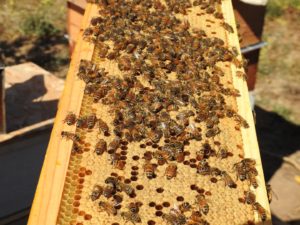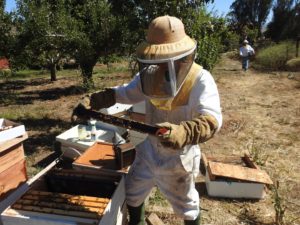Beginner Beekeeping Class
Saturday, March 24, 1-3 p.m. Oak Creek Commons 635 Nicklaus St.
Paso Robles
Led by Erin Holden: We’ll discuss the basics of keeping bees; hive design and equipment, procuring bees, bee hierarchy, honey harvest and pest management.
To pre-register, text Erin at: 805-720-5992
Fee: $20 for CCBA club members. Will accept venmo. $15 club dues for 2018 – cash only please.
-
Recent Posts
Categories
Archives
- June 2024
- May 2024
- March 2024
- February 2024
- January 2024
- November 2023
- October 2023
- September 2023
- August 2023
- July 2023
- June 2023
- May 2023
- April 2023
- March 2023
- February 2023
- January 2023
- November 2022
- October 2022
- August 2022
- July 2022
- June 2022
- February 2022
- January 2022
- September 2021
- February 2019
- March 2018
- July 2017
- June 2017
- May 2017
- February 2017
- June 2016

 48 hours in advance, brood is shaken free of bees and moved above a QE. The frames will be queenless, but heavily attended by nurse bees. Eggs above the excluder age out, so queencells won’t complicate the introduction of a mated queen.
48 hours in advance, brood is shaken free of bees and moved above a QE. The frames will be queenless, but heavily attended by nurse bees. Eggs above the excluder age out, so queencells won’t complicate the introduction of a mated queen. Frames are pulled and arranged in boxes. One open comb, one pollen frame, two brood frames, one honey frame. Brood frames go in the center of the nuc.
Frames are pulled and arranged in boxes. One open comb, one pollen frame, two brood frames, one honey frame. Brood frames go in the center of the nuc.
 . Cages are kept corked for 2-3 days, and then the candy cork is opened. A further 2 days allows the hive to open the candy. Only at day 5-6 is a passage through the candy drilled.
. Cages are kept corked for 2-3 days, and then the candy cork is opened. A further 2 days allows the hive to open the candy. Only at day 5-6 is a passage through the candy drilled.